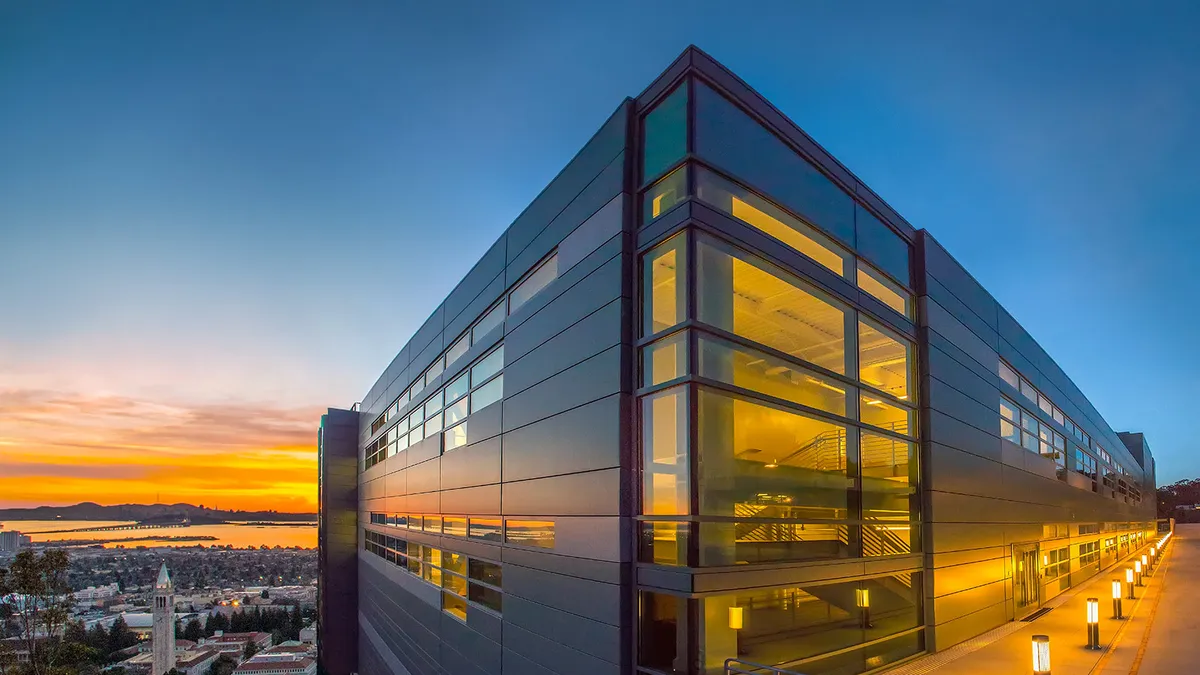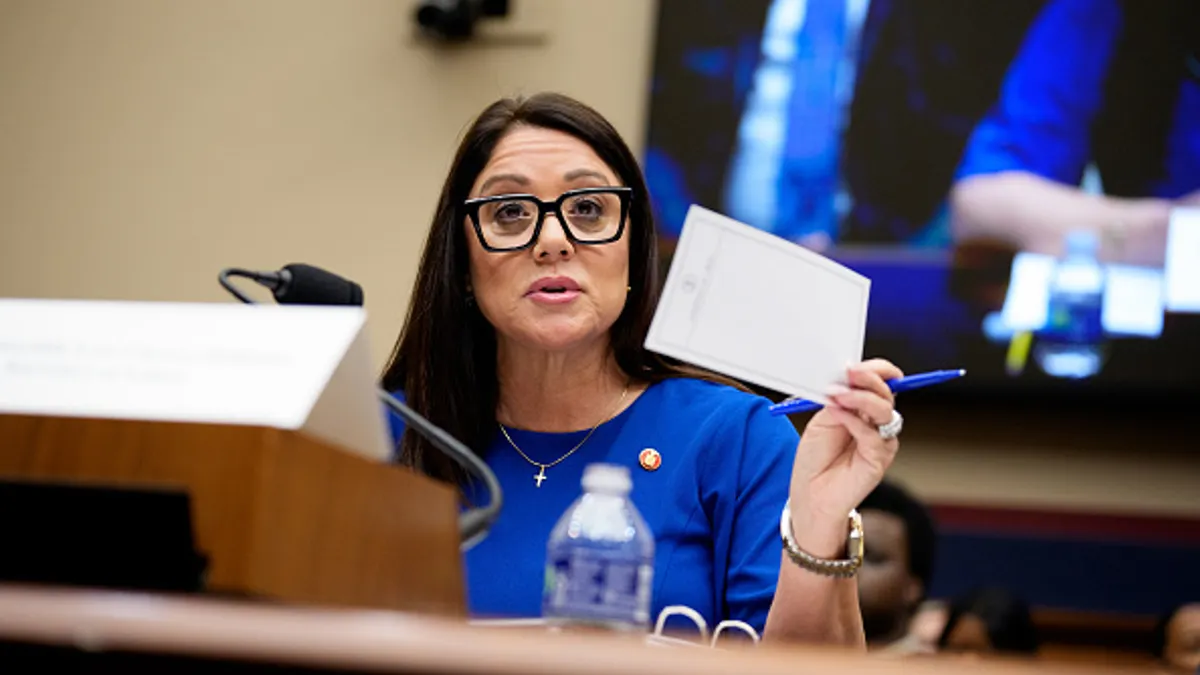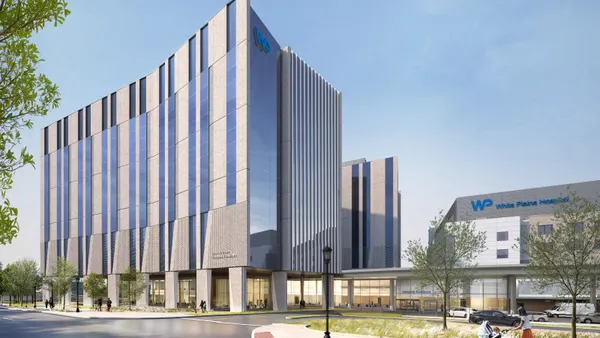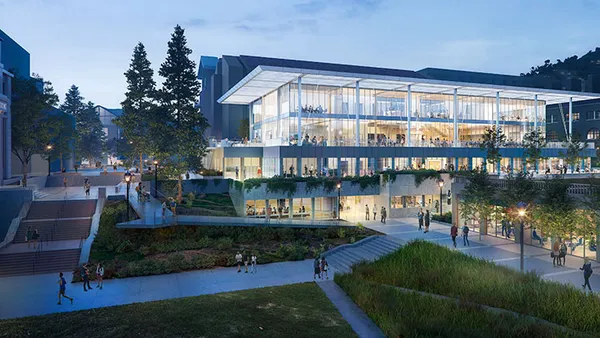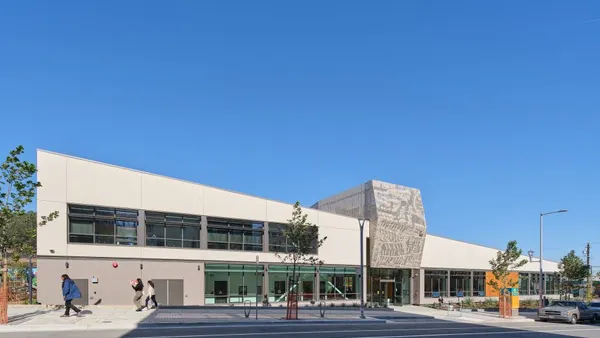Headquartered in the heart of Silicon Valley, XL Construction straddles the sweet spot between the tech industry's mecca and the major life sciences hub of South San Francisco. It builds for major players in both sectors, including Google and AstraZeneca.
But it also takes advantage of its California-centric focus by tackling higher education facilities at major institutions like University of California Berkeley, and medical center projects for clients like UC Davis Medical Group and Kaiser Permanente.
Rounding out its building footprint in the Golden State are government and municipal projects for Lawrence Berkeley National Laboratory (pictured above) and the County of Santa Clara, as well as the construction of a cargo building complex at San Francisco International Airport.
Here, Construction Dive talks with Richard Walker, XL Construction's incoming CEO, to discuss his journey from joining the company as chief operating officer in 2014 to the firm's top spot, his plans to tackle the ongoing challenges of the pandemic and his outlook for construction in 2022 and beyond.
The following has been edited for brevity and clarity.
CONSTRUCTION DIVE: It's a new year, and you've got a new role as XL's CEO. What do you want to do first?
RICHARD WALKER: It's interesting because the way we transition at XL in the senior leadership role, it's not a dramatic type of change for either the individual or for the company. Two years ago, [XL co-founder, outgoing CEO and current executive chairman] Eric Raff started handing me more and more things off of the CEO's plate, so to speak, onto mine and letting me kind of grow into that role naturally.
So it's not like I'm going to walk in the door and say, "Hey, I got a whole different set of ideas that I want to go into." Rather, it's continuing on with where we're going.
As you step into the CEO role, what's your outlook for 2022, given hurdles like the pandemic and labor and supply chain constraints?
Overall, I'm pretty optimistic. There are still a lot of opportunities to build some great buildings for some great clients.
Is there uncertainty out there? Sure. We still don't know the full direction of COVID, but there are signs that the pandemic may be transitioning to an endemic. So that's positive.
There is a lot of uncertainty that President Biden and others have to deal with in terms of navigating interest rates, and not letting them spike, while keeping inflation under control. So we're still navigating our way through an uncertain economy right now.
But we can't control that. We monitor those types of situations that could affect our company, but we stay focused on what our path is, which is understanding how we can be a solution toward the spiraling cost of construction and being able to deliver the best value to our clients at the least cost.
How have you been managing through omicron? How has this wave compared to earlier waves, and how are you doing on the vaccination front?
We have seen a greater number of infections than we have in the past, but we've had very low infection counts in our company, so we have seen that spike, but so far, we have not had any jobs come to a halt. Our team has stepped up to fill any voids of somebody that's had to quarantine or isolate.
We also have a pretty high vaccination count in our company. We're over 80% on our craft, and we're over 90% on our staff positions.
That's much higher than the industry in general, which is still below 60%. How have you achieved that?
We've encouraged our team members to get vaccinated and to get boosted as is appropriate.
But there are people out there, who cannot get vaccinated for medical reasons, and we respect that, as well as people that have very strong religious convictions.
It is something that is tough to navigate, there are no two ways about it.
It hasn't been helped by the misinformation that's out there. One of the things we've tried to encourage is directing people toward reliable sources, such as their doctor, and encouraging them to analyze the sources that they're relying upon.
What are you seeing with the supply chain and material prices? Are things getting any better?
We're still in an escalating construction cost market across the United States, and I don't see that being resolved real soon.
It goes beyond COVID. There are other factors that have come into play that are restricting the number of ships out there and also affect the trucking and the rail industries. Just finding people that are available to drive a truck has become more and more difficult. It's the cumulative effect.
On the flip side, though, there's just a huge amount of money that is out there. So if we do see some material prices tick down, people are going to drive into that void and try and put their money to work.
How do you talk to clients about those input increases for projects that are ongoing?
There are very few projects that we are not heavily involved in the preconstruction phase, so those conversations are ongoing. They're going on at least every month, if not every week.
We talk to them about where we are with our budget to keep clients informed on everything from design changes to cost impact, from inflation to construction team availability, and from the standpoint of our trade partners and when are they going to be able to supply the number of people needed to build the project.
These conversations are continuous so that we’re not all of the sudden walking into the client's office and saying, “Hey, we have a problem.”
Speaking of materials, what about mass timber? You all have been building a mass timber office space for Google. What are the pros and cons of working with mass timber?
It's an awesome product. It's beautiful. It creates a warmth in the building, and then also it definitely has a sustainable impact on carbon.
We spent about three years studying it before we actually started putting in place mass timber buildings ourselves, and now we self-perform our own erection. The planning that goes into that is very intensive if you want it to go smoothly.
But in terms of availability, obviously concrete is a lot easier to come by than mass timber. Same with steel. There are not as many sources for mass timber, and there's a lot of interest in it right now. So having a great relationship with a mass timber fabricator and supplier is really important.
Diversity and inclusion have taken on increased importance in construction. How can we get more diverse candidates to enter the field?
I think we have a challenge still in the field that it is not as diverse as it should be, particularly with respect to women and certain other minority groups, Black workers, for example. We have a lot of work to do there.
It is an image problem that construction first has to tackle. For a long time, construction was not viewed as a desirable industry to be in. And part of it was the behavior of people in certain circumstances in construction.
We need to do everything we can in this industry to make sure that any behavior that would cause anybody to want to stay away because of race, religion, sexual orientation, anything, is stopped.



